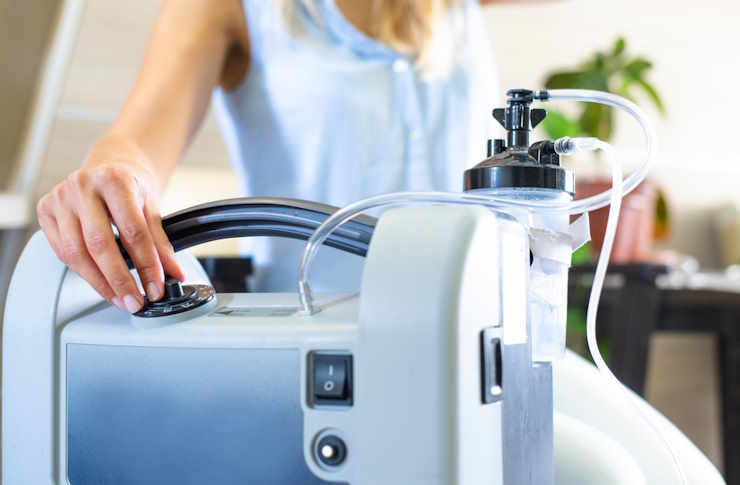Air Purifiers: Understanding Types, Benefits, and Choosing the Right One
Air purifiers have become increasingly popular in homes and offices, offering a solution to improve indoor air quality. These devices are designed to remove various contaminants from the air, providing cleaner and healthier breathing environments. In this article, we'll explore the different types of air purifiers, their benefits, and how to choose the right one for your space.

What are the different types of air purifiers and how do they work?
Air purifiers come in various types, each utilizing different technologies to clean the air. The most common types include:
-
HEPA (High-Efficiency Particulate Air) Filters: These filters are designed to capture 99.97% of particles as small as 0.3 microns. They work by forcing air through a fine mesh that traps particles such as dust, pollen, pet dander, and some bacteria.
-
Activated Carbon Filters: These filters are excellent at removing odors, gases, and volatile organic compounds (VOCs). They work by adsorbing these contaminants onto their porous surface.
-
UV-C Light Purifiers: These use ultraviolet light to kill bacteria, viruses, and other microorganisms. They’re often used in combination with other filtering methods.
-
Ionizers: These devices release negatively charged ions into the air, which attach to airborne particles, making them heavy enough to fall out of the air.
-
Ozone Generators: These produce ozone to neutralize odors and kill microorganisms. However, they’re controversial due to potential health risks associated with ozone exposure.
What are the differences between HEPA, carbon, and hybrid filter models?
While HEPA and carbon filters serve different purposes, many modern air purifiers combine these technologies for comprehensive air cleaning:
HEPA Filters:
-
Excellent at removing particulate matter
-
Ideal for allergies and asthma
-
Don’t remove odors or gases
Carbon Filters:
-
Effective at removing odors, gases, and VOCs
-
Don’t capture particulate matter
-
Great for smoke and chemical odors
Hybrid Models:
-
Combine HEPA and carbon filtration
-
Offer comprehensive air cleaning
-
Remove both particles and odors
-
Often include additional features like UV-C light or ionizers
What factors should you consider when choosing an air purifier for a room size?
Selecting the right air purifier for your space involves considering several factors:
-
Room Size: Match the purifier’s capacity (usually measured in square feet) to your room size. Larger rooms require more powerful units.
-
Air Changes per Hour (ACH): Look for purifiers that can cycle through the room’s air at least 4-5 times per hour for optimal performance.
-
Clean Air Delivery Rate (CADR): This measures the volume of clean air produced per minute. Higher CADR ratings indicate more effective purification.
-
Noise Level: Consider the decibel rating, especially if you’ll be using the purifier in bedrooms or quiet areas.
-
Energy Efficiency: Look for ENERGY STAR certified models to ensure lower operating costs.
-
Filter Replacement Costs: Factor in the long-term costs of filter replacements when budgeting for your air purifier.
Why do households and offices commonly use air purifiers?
Air purifiers are increasingly popular in both residential and commercial settings for several reasons:
-
Allergy and Asthma Relief: By removing allergens like dust, pollen, and pet dander, air purifiers can significantly improve symptoms for allergy and asthma sufferers.
-
Odor Elimination: They help neutralize unpleasant odors from cooking, pets, or smoke.
-
Improved Indoor Air Quality: In urban areas or during wildfire seasons, air purifiers can reduce exposure to outdoor pollutants that seep indoors.
-
Reduction of Airborne Diseases: Some models can help reduce the spread of airborne viruses and bacteria.
-
Removal of VOCs: In offices with new furniture or recent renovations, air purifiers can help remove harmful VOCs emitted from materials.
-
Better Sleep: By providing cleaner air, they may contribute to improved sleep quality.
What should you know about maintenance and filter replacement?
Proper maintenance is crucial for the effective operation of air purifiers:
-
Regular Filter Replacement: HEPA and carbon filters need to be replaced periodically, usually every 6-12 months, depending on usage and air quality.
-
Cleaning: Regular cleaning of pre-filters and external surfaces helps maintain efficiency.
-
Indicators: Many modern purifiers have filter replacement indicators to remind you when it’s time for a change.
-
Genuine Parts: Always use manufacturer-recommended replacement filters for optimal performance.
-
Operating Costs: Factor in the cost of replacement filters when budgeting for an air purifier.
-
Environmental Impact: Consider recyclable or biodegradable filter options if available.
By understanding the types of air purifiers available, their benefits, and how to choose and maintain them, you can make an informed decision to improve the air quality in your home or office. Remember that while air purifiers can significantly enhance indoor air quality, they work best in conjunction with good ventilation and regular cleaning practices.
This article is for informational purposes only and should not be considered medical advice. Please consult a qualified healthcare professional for personalized guidance and treatment.




